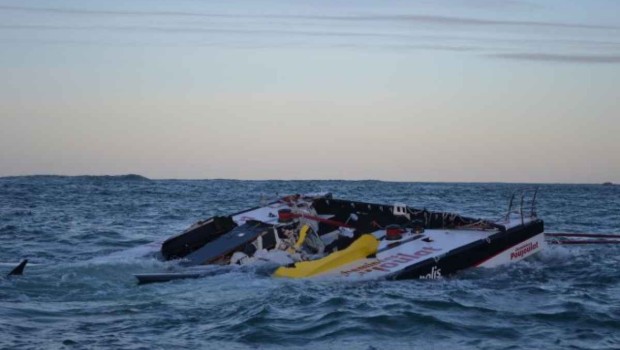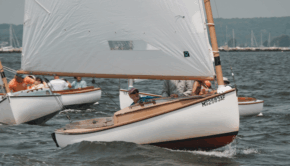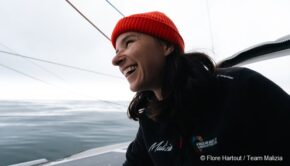Open 60: The Mystery of Why Cheminées Poujoulat Split in Two
Published on February 18th, 2014
by Bruce Gain, Sailing World
The news was not good: the Open 60 Cheminées Poujoulat, with Bernard Stamm and Damien Guillou onboard, was in serious trouble 180 miles from shore as one of the worst storms in decades pounded the Brittany Coast. For those onshore in the safety of their homes during that dark night before Christmas Eve, it was hard to imagine what it would be like to call a mayday as 70-knot winds and 20-foot waves struck the rocky coast.
Many shook their heads and said both sailors had known what to expect and lost after rolling the dice, instead of avoiding the storm. This type of reaction is common among those in the tight-knit offshore sailing and commercial fishing industry. When bad things happen, people often say something like: “They were professionals and knew the risks.”
But things were not what they seemed to be in many ways. To begin with, Stamm and Guillou are world-class offshore sailors. More importantly, the sea conditions were not as bad where they were over 150 miles off the coast. Indeed, why Cheminées Poujoulat split in two still remains a mystery over a month later. The incident is especially puzzling considering how the design of the Vendée Globe’s IMOCA class boats are supposed to be significantly safer and sturdier than they were a decade ago.
“Something like this has never happened before in the history of the IMOCA class,” said Merfyn Owen, of Owen Clarke Design, which designed Acciona.
The two sailors were on their way from Brazil when disaster struck, after taking third place in the IMOCA class category of the Transat Jacques Vabre. Stamm had successfully skippered Cheminées Poujoulat alone for most of the Vendée Globe course less than a year before without experiencing any major structural breakage, but was forced to abandon the race south of New Zealand due to a hydrogenerator malfunction.
Both sailors had also seen worse, much worse, and as Stamm would later reveal, they had avoided the nastiest part of the storm. They were taking their time when the incident happened, sailing at 12 to 13 knots with four reefs and the wind behind them. The wind was gale force, between 43 and 45 knots, and the seas were big, but the main part of the front was ahead of them.
“You don’t prepare to sail around the world in only 15 knots of wind in Brittany,” Stamm said. “We never felt like we had to shut everything down and go inside, which you have to do if the conditions get too bad.”
In short, the two sailors thought they were in good shape to head to port the next morning on a tried-and-tested boat sailing well within the limits for which it was designed. But that all changed at around 8:30 p.m. The two sailors were seated at the map table when they heard a loud crack as the boat went over a wave. – Read on









 We’ll keep your information safe.
We’ll keep your information safe.